|
BACKGROUND
No background material today.
|
Online links to scriptures (New International Version [NIV] unless otherwise stated) are shown in blue
| THE THREE ARMIES OF GOD |
|
 The Lord has given me a picture of three armies, all fighting the same enemy but with varying degrees of effectiveness. The Lord has given me a picture of three armies, all fighting the same enemy but with varying degrees of effectiveness.
|
| THE OUTER COURT ARMY: |
|
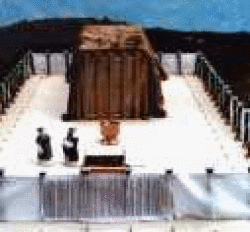
|
|
|
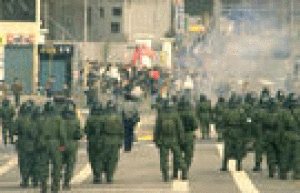 This army reminds me of the Chinese Army. They appear to be a huge, seething mass of soldiers when looked at from a distance but as you get closer you can see that they are in ranks, very close together. Their uniforms are all much the same but there are epaulets distinguishing regiments. The regiments are separate and do not mix. The officer’s uniforms stand out. This army reminds me of the Chinese Army. They appear to be a huge, seething mass of soldiers when looked at from a distance but as you get closer you can see that they are in ranks, very close together. Their uniforms are all much the same but there are epaulets distinguishing regiments. The regiments are separate and do not mix. The officer’s uniforms stand out.
The soldiers are armed only with a very basic rifle. They are pleased to be in the army as it gives them security in an otherwise poor country. The only way they can win battles however is by sheer force of numbers. The leadership doesn’t mind sacrificing soldiers in the battle, as there are plenty of replacements available. The individual soldiers however, while willing to sacrifice themselves in this way in the past, are not so keen to do so now, their education levels having increased. Most of the leaders however do not realise this, being of the old school. So there is increasing disaffection in the ranks and even desertions, as the soldiers are no longer prepared to be cannon fodder.
The leadership is at a loss as to what to do. They are not prepared to learn new tactical skills as they feel they already have all the answers. What used to work still should, in their opinion, but it doesn’t. They have a defeated look in their eyes when confronting major battles. So they avoid these and restrict themselves to minor, low tech skirmishes, where their numerical superiority guarantees success. They are increasingly reluctant to enter into battle unless success is virtually guaranteed, for they know they cannot rely on their troops to accept the risks of all out warfare. This huge potential resource is slowly dying due to the lack of innovative and inspiring leadership and their leaders inability and unwillingness to employ the new weaponry their government is providing. It sits neatly in piles in huge storage sheds that surround the army. The leadership have put armed guards on these sheds with orders to shoot on sight any soldier attempting to use their own initiative to go in and try out one of these weapons. The soldiers lose even more interest and many do not renew their contracts once they have served their allotted time. The army therefore, has to expend even greater resources on attracting and training to a basic level, new recruits. This distracts them from the battle even more.
Their enemies can see this and are getting bolder and bolder in their attacks. The size of their occupied land is shrinking as the soldiers gradually withdraw towards the safety of numbers in the middle of their territory. Yet the army is potentially a tremendously powerful one, consisting as it does of such huge numbers of soldiers. If only the leadership would employ new tactics and make use of the weaponry available to it, it could once again become a great force. Sadly, such a change does not appear to be in sight.
Encouragingly though, increasing numbers of the soldiers who are leaving realise the situation and are joining the adjoining supporting armies who they can see are prepared to use the weaponry they have been given. This, in spite of the leadership instructing them not to have anything to do with these armies, whom they sometimes incorrectly see as being the enemy.
The enemy, in increasing desperation, seeing not one but three armies gathering against it, is concentrating its attacks far more than it used to. Sadly, this first army is not adapting to this new situation at all well. It spends most time remembering past glory days, rather than adapting to today’s battle conditions. While it cannot be defeated completely because of the huge numbers and infrastructure it contains, it is continually reducing in size and effectiveness, leaving more and more of the responsibility of the battle to its associated armies.
|
| THE HOLY PLACE ARMY: |
|
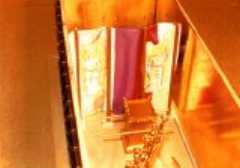
|
|
|
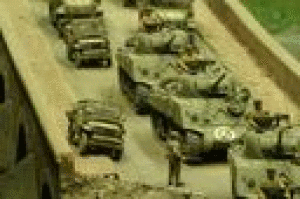 This army reminds me of NATO. Not as many soldiers as the first army although they cover a greater area, being spread further apart. This army is in a much more confident mood, having had recent victories, although in reality, against much less sophisticated foes. Their uniforms are many and varied, representing the diversity of countries they come from. The troops are more highly educated, needing to be to handle the sophisticated weaponry they have at their disposal. The officers are clearly distinguishable from the troops, not because their uniforms are radically different, but because they have adorned themselves with all sorts of gold braid and medals to make themselves stand out. This army reminds me of NATO. Not as many soldiers as the first army although they cover a greater area, being spread further apart. This army is in a much more confident mood, having had recent victories, although in reality, against much less sophisticated foes. Their uniforms are many and varied, representing the diversity of countries they come from. The troops are more highly educated, needing to be to handle the sophisticated weaponry they have at their disposal. The officers are clearly distinguishable from the troops, not because their uniforms are radically different, but because they have adorned themselves with all sorts of gold braid and medals to make themselves stand out.
Everything looks pretty good on the surface but there are major problems underneath. Firstly in the areas of communications. For here are many different national languages spoken, so troop units have considerable difficulties in communicating with each other. An attempt has been made to overcome this by making the predominant, English language the primary one for the command structure, but misinterpretations are frequent, particularly in the heat of battle when stress levels are high. Resentment and uncertainty occurs, amongst both officers and men. This is a major problem with this army, for national pride supersedes efficiency and effectiveness on many occasions. Each national unit feels that they know best and want their own people to be at the top of the command structure. This has led to a top-heavy organisation, one slow in making decisions. Pride and bickering between units, each of whom have slightly different agendas, also reduces the effectiveness of this army considerably. But they are finding now, the more they fight beside each other and come to rely upon each other in the heat of battle, that their differences are not as great as they once thought they were. As the battle intensifies, they are realising that they indeed have all critical areas in common and that the enemy is the real foe.
Weaponry is not a problem for this army. They have more than adequate supplies provided by their governments and the soldiers are keen and eager to use it. Unfortunately however, the weaponry is looked upon as being sufficient to win all the battles by itself. Technology is king. This reliance on technology has now got to such a state that the army is jeopardising the equipment’s effectiveness by not being willing to risk soldiers lives in the employment of it. So massive firepower is poured out in a shotgun approach from a long range, losing its effectiveness and inflicting more damage than is really necessary, both to property, but more importantly, unnecessarily injuring and killing innocent civilians.
The life of the soldier has become more important than the lives of the people they are fighting to protect or release. While the individual soldiers are prepared to fight, the leadership are unwilling to risk the public backlash that battle casualties are likely to cause. For they are most interested in protecting their lives and positions, and supplies of high tech weaponry. Sadly, the leaders’ focus has turned inward, away from the battle to what is in their personal best interest. Getting the leaders to work together is harder than for the troops, but it is happening more.
While this army, in spite of its limitations, has been winning many battles, the enemy is getting wise to its major weakness, particularly the unwillingness to risk soldiers’ lives. So the enemy has designed his tactics to get the army offside with the people it is trying to influence by exaggerating damage and casualty figures. If it can’t win the war on the battlefield itself because of the power of the weapons employed against it, it will try to win the propaganda war, both amongst the soldiers themselves and within the civilian population. For the enemy’s real expertise is in psychological warfare as in reality, he does not have a fraction of the weaponry of the army available to him.
While this army may appear to be on top of the present level of enemy activity, it currently does not have the willpower necessary to fight against a foe prepared to launch all his resources in one final desperate fight to the death. When this time arrives, this army is going to be faced with the most critical decision of its existence – are leaders and soldiers alike prepared to die for the cause? Some will and some wont.
Many will leave the army but there will be many more prepared to fight to the end, putting the cause ahead of their personal safety.
|
| THE HOLY OF HOLIES ARMY: |
|
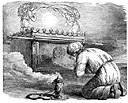
|
|
|
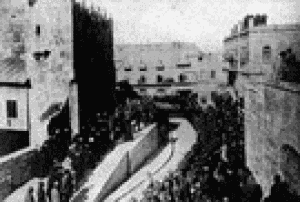 This army reminds me of the Israeli Army. An army that always appears to be facing insurmountable odds, both numerically and in weaponry, but continues to win its ongoing battle of survival. This army is not large in comparison to the other two, in fact it is really only now starting to be formed. But it is growing rapidly and will in time, become the most effective, although remaining the smallest of the three. The most impressive impression of it as it grows, is that it has a focused direction. This army reminds me of the Israeli Army. An army that always appears to be facing insurmountable odds, both numerically and in weaponry, but continues to win its ongoing battle of survival. This army is not large in comparison to the other two, in fact it is really only now starting to be formed. But it is growing rapidly and will in time, become the most effective, although remaining the smallest of the three. The most impressive impression of it as it grows, is that it has a focused direction.
The soldiers’ uniforms are not smart; in fact they display the dirt and grime of battle. The soldiers themselves have a battle hardened look, for they have personally experienced the harsh reality of war. Understanding only too well, the reality that they may be one of the next casualties. They know that war is harsh, hard and unforgiving. Realising that war is not a game, that it involves risks, that many don’t return. Understanding war is necessary for survival, individually and as a nation. Yet their look is not one of exhaustion even though they are tired, but one of confident expectation, knowing that the victory is already won!
Interestingly they seem to be so well organised, moving as if one, yet their leadership is not obvious. No one person stands out by virtue of his or her uniform. All appear much the same. Yet the leaders are there and obviously well respected, giving instructions in an informal yet precise way. For the leaders are as one with the soldiers, giving the impression that they have come out of the ranks, rather than having been imposed from above. All speak the same language. Orders are therefore easily understood and instantly acted upon as if the soldiers’ lives depend upon it, which in fact they do. Surprisingly there appear to be far fewer fulltime professional soldiers in this army, compared to the other two. Even many of the officers have outside jobs and come and go as required. This doesn’t seem to be a handicap at all, for they seem better able to relate to their soldiers than the professionals do.
Their weaponry is very good, but not necessarily the very latest available, although some is. Indeed much looks very battle scarred but is still in very good working order. For it is almost as if these soldiers are as one with their equipment. They obviously understood it thoroughly, through much training and wartime experience. Knowing what it can do and its limitations, they work within these to achieve the maximum results from their armoury. Differences of rank do not affect the jobs they do. Each job is done by the best person available and when a job is required to be done urgently, all ‘muck in’ and do it. This army operates on a team rather than a hierarchical basis.
The territory they control is actually not that large, although on a per man basis it is much greater than for the other two. What is most important though, is the key location of the area. It reaches out into the very heart of the enemy. So different to the first two armies, which have essentially become defensive in orientation. For this army, the best form of defence is attack. They instinctively know that if they sit back and wait to be attacked, they will be overwhelmed by the sheer weight of numbers of the enemy. Controlled aggression typifies their strategic thinking.
This results in their companion armies having a much easier time of things than they would otherwise have had. For they alone recognise that all three armies have a role to play in the overall victory. Even when their air of quiet confidence and successes are misunderstood, sometimes even envied by the other armies. Gradually however, through patient communication and because of the spectacular results this army is achieving, their companion armies are being won over.
Indeed recruitment skyrockets, as other soldiers want to join. However many can’t pass the intense initiation programme which requires total commitment and dedication to complete. For this army can only operate successfully with those who are 100% sold out to the vision and prepared to make the ultimate sacrifice of their lives in the attainment of it. The vision of this army is not one of containment, but rather, a total and final victory over the enemy. They are highly educated, knowing their strategy and goals backwards. Most importantly, they know that when they follow the defined battle plan, their ultimate victory is assured.
|
| INTERPRETATION: |
|
 A few hints to help you. A few hints to help you.
Outer Court Army: Traditional/Evangelical Church
Holy Place Army: Pentecostal/Charismatic Church
Holy of Holies Army: Tabernacle Church Movement/Army
Education: Knowledge of the Word.
Regiments. Nations: Denominations, Ministries
Braid, Medals, etc: Vestments etc.
Uniforms: Picture of the nature of the people in the particular army.
Weapons: Spiritual Gifts.
Leaders: Pastors, Teachers, Evangelists, Prophets, Apostles, Ministers, Pastors, Priests, etc.
Enemy: Satan and his army.
Battle: Between forces of good and evil.
Battlefield: External for the Church, internal for the individual.
Psychological Warfare: Waged by Satan on our mind, convincing us to give up the battle.
XXX Army: Similar to, but not precisely the same as. A human illustration only.
Received by David Tait: 20 March 2000
|
| <i>NEXT WEEK</i>
UP THE MOUNTAIN
Part 1 of 4 |
|
This allegory was given to me one ordinary day as I was sitting at my computer, wondering what to write next for the book, ‘Eagles Fly High!’ The full story was revealed and recorded over the period of a fortnight. Most unusually for me, the inspiration was given while working at home. I hope you will be as excited and challenged by it as I have been.
|
| A NOTE FROM DAVID |
|
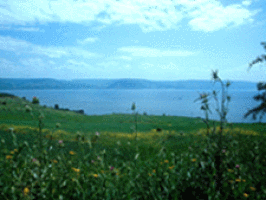 Which army do you want to be part of? The annonymity of the Chinese, the firepower of NATO, or the challenge of the Israeli., am army winning victories over seemingly impossible odds. The choice is ours. Which army do you want to be part of? The annonymity of the Chinese, the firepower of NATO, or the challenge of the Israeli., am army winning victories over seemingly impossible odds. The choice is ours.
This week, we are commencing a series of pictures from around the Sea of Galilee.
Rabbis of ancient times said, “The Lord has created seven seas, but the Sea of Galilee is his delight.†Anyone who sees the Sea of Galilee understands this statement: The blue water, set against a green and brown background of surrounding mountains, creates a lovely scene. This freshwater lake is the largest in Israel, and many place it among the world’s most beautiful lakes.
The Bible does not tell us why God chose this place as the location for Jesus’ ministry, but as Creator, he certainly appreciated its beauty. Here God sent his Son with the message that the kingdom of God was at hand. The sea and its fishermen provided images that Jesus used to explain his kingdom and his followers’ role in it. And the sea also gave him opportunities to demonstrate that he was truly God.
Jesus spent most of his short ministry near or on the Sea of Galilee. As walk along the shore, we will better understand Jesus’ message and ministry.
Source: http://www.followtherabbi.com
|
So until next week.......
MAY GOD BLESS YOU AND YOU BLESS GOD!
His servant and yours

Learn more about us at...
www.wwj.org.nz/about.php
|
A DAVID'S DOODLING
305. A foolish man can seek wisdom, the wise man godliness, while the godly man grows into the image of Christ.
David Tait
|
Check
out the WWJ website for….
More David's Doodlings: www.wwj.org.nz/dd.php
Everything you ever wanted to know about....: http://www.wwj.org.nz/exex.php
Life's a Laugh: http://www.wwj.org.nz/lifelaugh.php
Links to other sites of interest: http://www.wwj.org.nz/links.php
Till Death do us Part!: http://www.wwj.org.nz/tddup.php
|

 The Lord has given me a picture of three armies, all fighting the same enemy but with varying degrees of effectiveness.
The Lord has given me a picture of three armies, all fighting the same enemy but with varying degrees of effectiveness. 
 This army reminds me of the Chinese Army. They appear to be a huge, seething mass of soldiers when looked at from a distance but as you get closer you can see that they are in ranks, very close together. Their uniforms are all much the same but there are epaulets distinguishing regiments. The regiments are separate and do not mix. The officer’s uniforms stand out.
This army reminds me of the Chinese Army. They appear to be a huge, seething mass of soldiers when looked at from a distance but as you get closer you can see that they are in ranks, very close together. Their uniforms are all much the same but there are epaulets distinguishing regiments. The regiments are separate and do not mix. The officer’s uniforms stand out. 
 This army reminds me of NATO. Not as many soldiers as the first army although they cover a greater area, being spread further apart. This army is in a much more confident mood, having had recent victories, although in reality, against much less sophisticated foes. Their uniforms are many and varied, representing the diversity of countries they come from. The troops are more highly educated, needing to be to handle the sophisticated weaponry they have at their disposal. The officers are clearly distinguishable from the troops, not because their uniforms are radically different, but because they have adorned themselves with all sorts of gold braid and medals to make themselves stand out.
This army reminds me of NATO. Not as many soldiers as the first army although they cover a greater area, being spread further apart. This army is in a much more confident mood, having had recent victories, although in reality, against much less sophisticated foes. Their uniforms are many and varied, representing the diversity of countries they come from. The troops are more highly educated, needing to be to handle the sophisticated weaponry they have at their disposal. The officers are clearly distinguishable from the troops, not because their uniforms are radically different, but because they have adorned themselves with all sorts of gold braid and medals to make themselves stand out. 
 This army reminds me of the Israeli Army. An army that always appears to be facing insurmountable odds, both numerically and in weaponry, but continues to win its ongoing battle of survival. This army is not large in comparison to the other two, in fact it is really only now starting to be formed. But it is growing rapidly and will in time, become the most effective, although remaining the smallest of the three. The most impressive impression of it as it grows, is that it has a focused direction.
This army reminds me of the Israeli Army. An army that always appears to be facing insurmountable odds, both numerically and in weaponry, but continues to win its ongoing battle of survival. This army is not large in comparison to the other two, in fact it is really only now starting to be formed. But it is growing rapidly and will in time, become the most effective, although remaining the smallest of the three. The most impressive impression of it as it grows, is that it has a focused direction.  A few hints to help you.
A few hints to help you. Which army do you want to be part of? The annonymity of the Chinese, the firepower of NATO, or the challenge of the Israeli., am army winning victories over seemingly impossible odds. The choice is ours.
Which army do you want to be part of? The annonymity of the Chinese, the firepower of NATO, or the challenge of the Israeli., am army winning victories over seemingly impossible odds. The choice is ours.